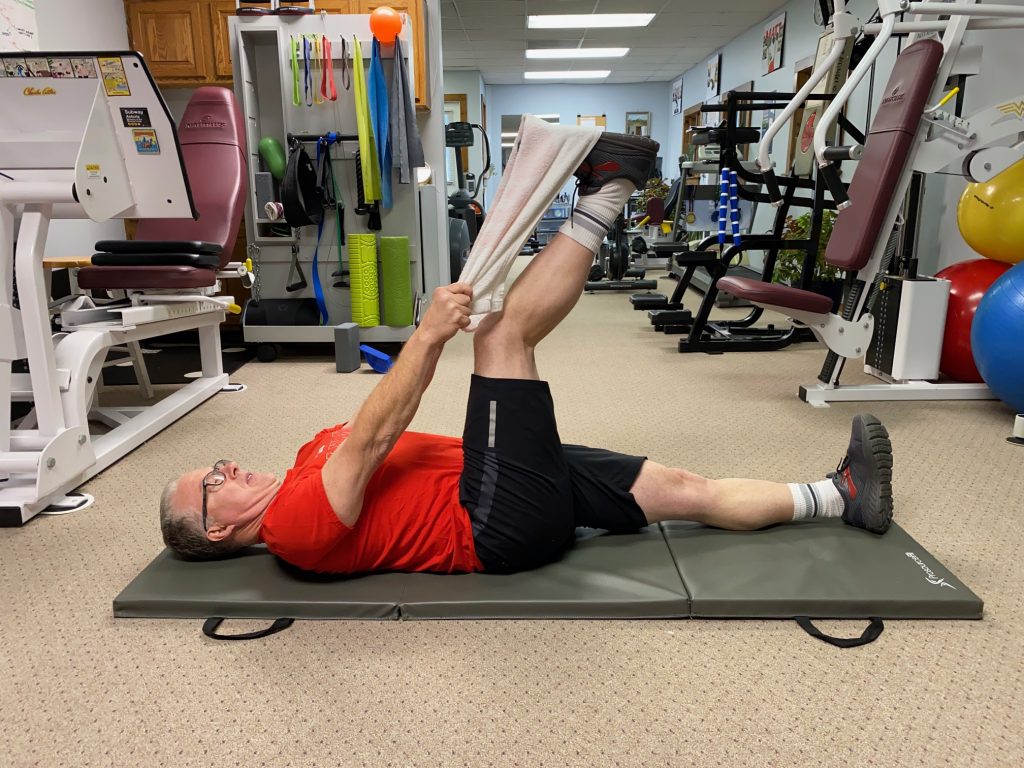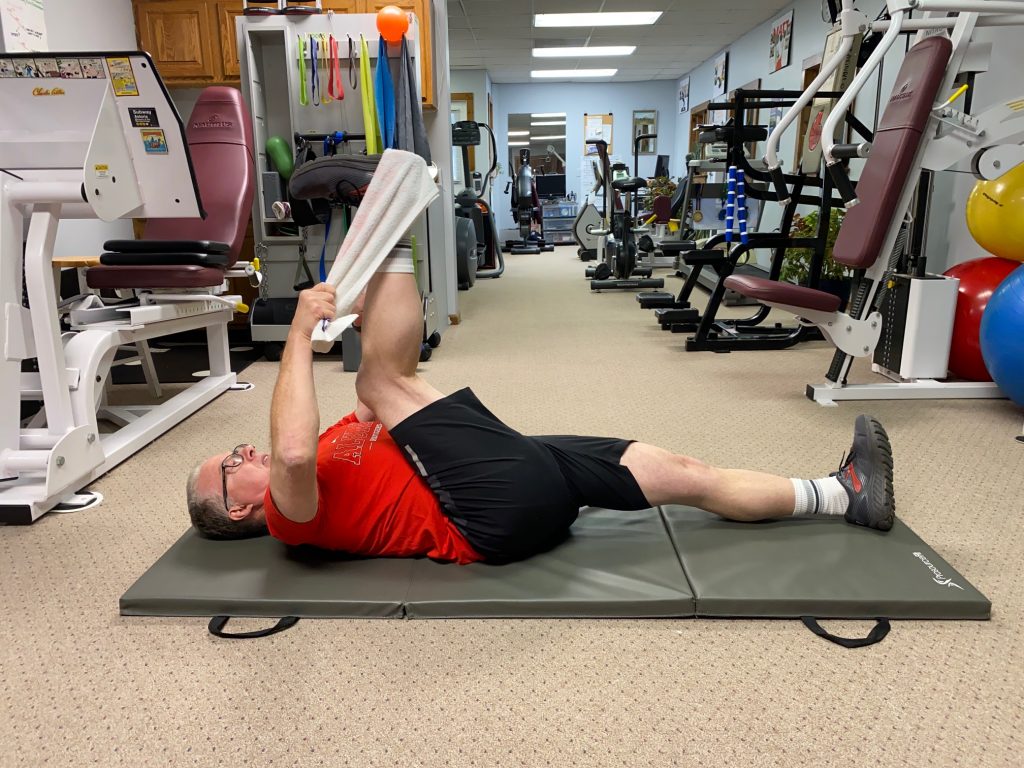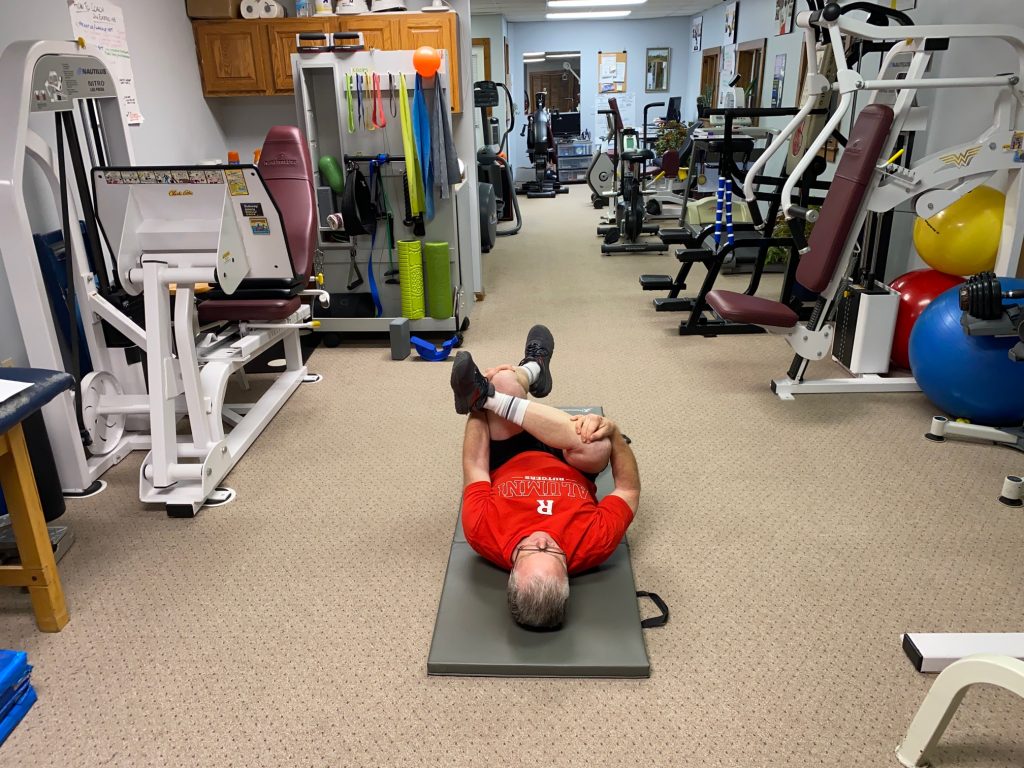By Bill DeSimone
Do you stretch as part of your workouts? “I know I should, but…not really.”
If that’s your answer, here is a brief but effective routine that you can do in six minutes or less. It targets areas specific to running, emphasizes the proper “feel” of the stretch instead of copying limb positions, and since it’s so brief can more easily become a regular part of your workout, which is where the real benefit lies.
You’ll do three stretches: one for the calf, the hamstring, and the hip, in that order, all on one leg, then repeat on the other. You hold each stretch for 30 seconds, with a few seconds on both sides to set up and ease your way into and out of the stretch. And you do these immediately after your run or cardio workout, so that your body is already warm and will stretch more efficiently.
A muscle that is not constantly under tension simply works and feels better. It contracts and releases with less interference. Not only do you want your leg muscles to propel you when you run, you also want them to act as shock absorbers when you land. If your leg muscles are chronically tight, you not only risk straining those muscles, but your joints and connective tissues absorb more of the impact of landing. You may not notice now, but in time, you shouldn’t be surprised if you suffer overuse injuries of the foot, ankle, knee, hip, and lower back.
Do the following stretches in this order, all on one leg, then repeat all on the other. For each of these, take a few seconds to ease into the stretch, then once you feel the stretch, hold that sensation for 30 seconds. Then ease out of the stretch to move into the next. Once you practice the set up a few times, you’ll be able to ease in and out faster, but to start, there’s no rush.
1. The Calf Stretch (gastrocnemius, soleus, and deeper muscles of the lower leg)

- Ease out of the calf stretch. Lower the towel to wrap around your heel.
- Bring your bent knee towards your chest again.
- Slowly straighten your knee. Use your arms to pull your foot towards your head.
You don’t necessarily have to fully straighten your knee; only enough to feel the stretch in the middle of the hamstrings. If you feel the stretch behind the knee or in the hip, readjust until you feel it in the hamstrings. A small adjustment can make a big difference in feeling the stretch properly.
Ease into the stretch, hold the sensation for 30 seconds, then ease out of the stretch and move to…
2. The Hamstring Stretch (biceps femoris, semitendinosus, semimembranosus)

- Ease out of the calf stretch. Lower the towel to wrap around your heel.
- Bring your bent knee towards your chest again.
- Slowly straighten your knee. Use your arms to pull your foot towards your head.
You don’t necessarily have to fully straighten your knee; only enough to feel the stretch in the middle of the hamstrings. If you feel the stretch behind the knee or in the hip, readjust until you feel it in the hamstrings. A small adjustment can make a big difference in feeling the stretch properly.
Ease into the stretch, hold the sensation for 30 seconds, then ease out of the stretch and move to…
3. Hip Stretch (piriformis, gluteus medius and other deep hip rotators)

- Ease out of the hamstring stretch. Bend that knee, turn your thigh, and put your ankle on the opposite knee.
- Bring both knees (one straight, one turned) to your chest.
- Lightly hug each knee until you feel a sensation deep in the hip towards the outside.
You use the combination of the bottom knee against the shin and your hands on knees to turn the thigh to stretch the hip. Don’t crank too aggressively as you’re probably not used to moving your hip this way. Use the hand on the “top” knee to adjust (push or pull) to get the right sensation.
“Caveat Exerciser” Never abruptly push your muscles to the full stretch immediately. At best, the muscles will contract harder in response to protect themselves and at worst, you push yourself into an injury. A forced stretch is just that; don’t confuse it with an Assisted Stretch.
In Assisted Stretching, the assist from the trainer or partner is in positioning your limbs to make it easier for you to feel the stretch, or it comes from the verbal cues to do PNF or Active-Isolated techniques. It is NOT yanking your limbs apart or putting their full bodyweight on a limb to crank on the joint. Keep in mind that you want your muscles to be flexible, but you want your joints to be stable.
You as an individual may have more areas that would benefit from stretching, especially if you have had prior injuries. But if you’re injury-free and not already stretching, starting with an elaborate program may not stick. The most comprehensive routine you do once is not as useful to you as a basic one you do regularly.
Bill DeSimone is a Rutgers Alumnus and author of Joint-Friendly Fitness (https://tinyurl.com/JFFbook) featuring several alumni and interns. His studio, Optimal Exercise Cranbury, offers Assisted Stretching, an internship for Rutgers Exercise Science majors, and personal training. Connect with him on LinkedIn or at optimalexercise@comcast.net.
Bill will be conducting a Stretching Station at the 2021 Big Chill 5K, to assist with this routine and demonstrate Assisted Stretching.
